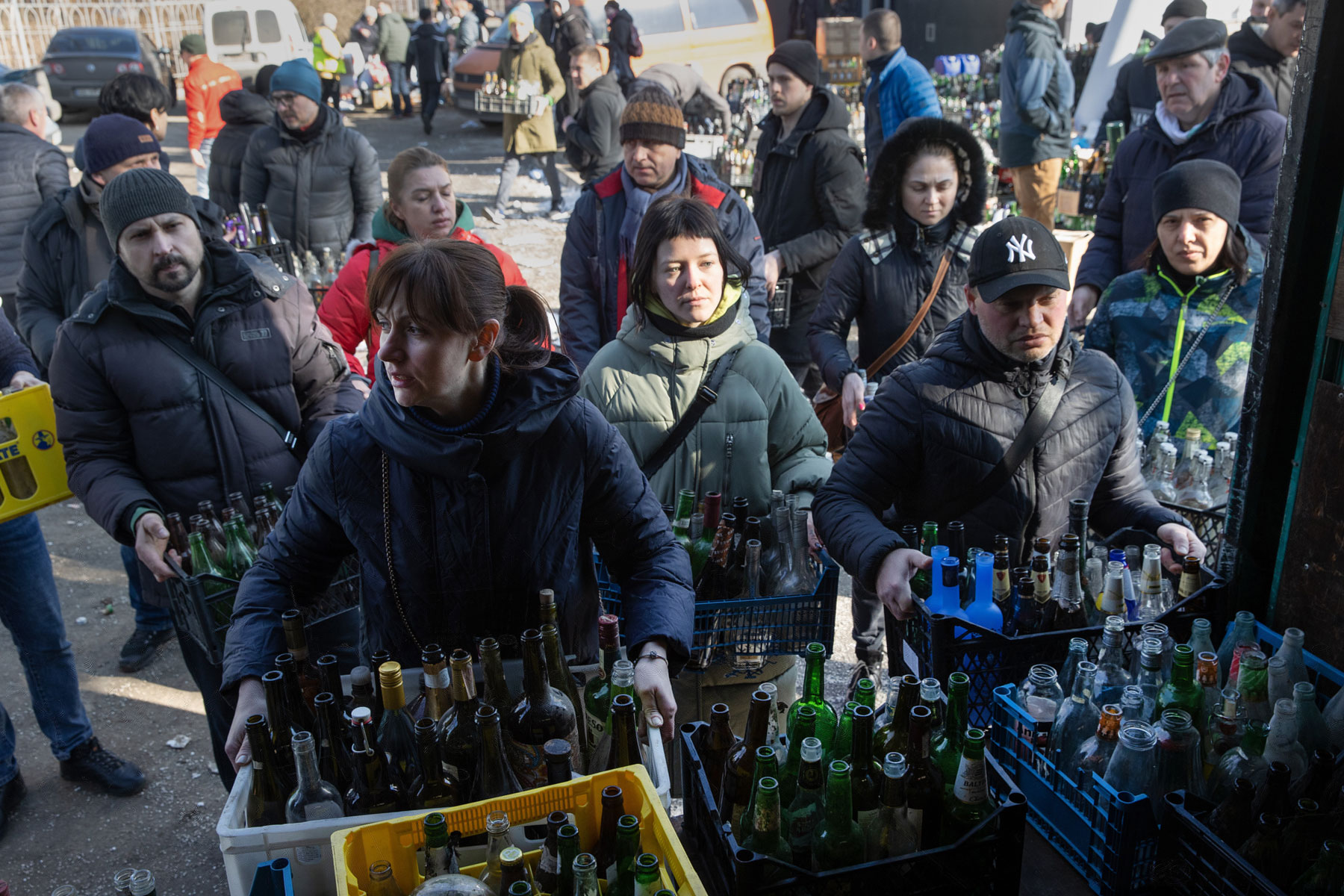This article was produced in partnership with Retro Report, and first appeared in Retro Report’s free weekly newsletter. Photo by Tyler Hicks/The New York Times/Redux.
By Irem Ozturan
“Make Molotov cocktails, neutralize the occupier!” the Ukrainian Ministry of Defense tweeted, urging citizens to fight what has become the largest military assault in Europe since World War II. Ukraine’s National Guard shared instructions on social media last week for making the bomb, which has roots in the 1930s and 40s.
Improvised bombs like Molotov cocktails, relatively easy and cheap to produce, are a staple of groups short on traditional military equipment, like rioters, urban guerillas, terrorists and football hooligans. But they were developed as tools of large-scale war, used to combat foreign invaders.
The name comes from the Winter War, when Soviet forces invaded Finland and bombed Helsinki, the nation’s capital in 1939. Facing international criticism, Soviet Foreign Minister Vyacheslav Molotov falsely claimed the attack was meant as humanitarian aid for their starving neighbors. That inspired Finns, who were not starving, to sarcastically dub Soviet cluster bombs “Molotov’s bread baskets.”
Soon Finns began building bombs from gasoline-filled glass bottles with a stick as a fuse, calling them “Molotov cocktails,” according to historian William R. Trotter. The weapons proved effective even against Soviet tanks.
Similar handmade bombs go back at least as far as Spain’s Civil War (1936-1939). Spanish Nationalist troops used them against Soviet tanks supporting the Spanish Republicans; later, both sides deployed them.
In 1939 in the Battle of Khalkhin Gol, a series of Soviet-Japanese border conflicts, more than 100 Soviet tanks or armored cars were destroyed by similar weapons. In the early 1940s, improvised bombs were stockpiled in Britain to be used against German tanks in case of a Nazi invasion.
Last week, as Russian troops advanced on Kyiv and other cities, Ukrainians used resources in innovative ways to build and maintain ammunition. Civilians turned a public park in Dnipro, in central Ukraine, into an open-air Molotov cocktail factory. Military instructors taught civilians how to use the weapons in an abandoned factory in Kyiv. Employees at the Pravda Brewery in Lyiv halted beer production and manufactured makeshift bombs instead. In restaurants, according to a New York Times report, bottled water is being served exclusively in plastic bottles. The glass ones are being used to make Molotov cocktails.

